One of the heritages that India enjoys is located on its Northern side. It is the Himalayan range that houses the Pashmina goat that grows fine Cashmere wool on its body. The wool is world-famous for being warm, soft, fine, and luxurious. Cashmere is actually the down fibre of this goat which it grows as a means to survive the climate. Cashmere wool is also called Pashm, which literally translates to soft gold. It is India that produces the best Pashmina, yet the annual production is less than 1% of the total world production.
In India, there are mainly two types of Cashmere producing goats. One is the Chegu and the other is the Changthangi. Chegu is a Cashmere bearing goat and is found in the areas of Kinnaur in Himachal Pradesh and some high altitude areas of Uttarkashi, Chamoli and a few districts of Uttaranchal located near the Himalayas. The Changthangi goat is reared in Changthang, Ladakh which is located over 15000 feet above sea level. The average temperature this area witnesses is +40 to -40 degrees C. This is considered one of the harshest temperatures in the world.
Rearing Changthangi goats for Cashmere is the economic mainstay for the locals as more than half of their income depends on the Pashmina shawls of Kashmir.
Difference between Cashmere and Pashmina
Before moving forward, understanding the difference between Cashmere and Pashmina is a must. Cashmere is the raw wool that grows on the Himalayan goat (Chegu or Changthangi). Pashmina, on the other hand, is the art of processing this Cashmere wool preparing luxury shawls, scarves or wraps.
How Special is Pashmina?
Pashmina shawls come from the Cashmere wool of Ladakh. These are cherished by women from around the world for their warmth, fine texture, lightweight and immense softness. Pashmina shawls take dyes well and look equally graceful with dyes as they look in their natural shades. Owing to the minute size of each Cashmere fibre (12 to 16 microns diameter), the shawls require manual labour and years to complete. As such, these luxury accessories are highly prized and fairly so.
Changthang and the Pashmina Goat
‘Chang’ means ‘Northern’ and ‘Thang' means ‘Plains’. It is a high altitude plateau in Leh, in the Ladakh region, and is bordered by China in the East.
Changthang is occupied by Buddhist nomads, and have been doing so for centuries now. This tribe is called the Changpa tribe who are known to have adapted to the cruel winds and harsh climate of the plateau. They have been successful in this endeavour, as their history of living in these conditions dates back to centuries.
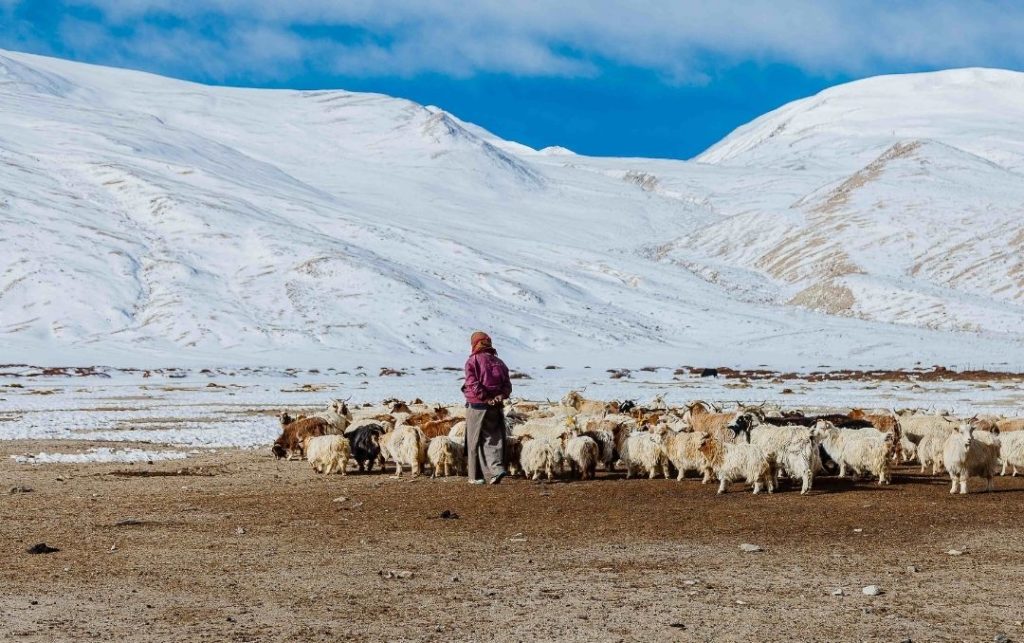
Changpas are a pastoral community, who move from place to place with their animals. Their animals are the only mode of survival for them, and the people are wholly dependent on this livestock. The livestock, in turn, is dependent on the nomads for feeding them, taking them from place to place, and finding habitats for them that are rich in grass and water for their survival. The main occupation of the Changpa tribe is animal husbandry. It is due to the meticulous efforts of this Changpa tribe that Cashmere wool becomes available easily to Kashmiri artisans. It is their constant battle against the harsh life and pain stalking efforts to raise these animals all along the winter season so that they can grow fine and soft Cashmere in Spring.
The temperature in Changthang falls to -40 degrees C in winter and +40 in summer. Summer is brief, and the temperature is high in the day but can fall abruptly at night. Due to the high altitude and thin air, there is a high degree of radiation in Ladakh. Plant growth is minimal due to low precipitation.
Also read: Is Cashmere Worth it?
The Pashmina Goat
Pashmina goats are also known as Cashmere goats (as they produce Cashmere, Changthangi goats owing to their habitat) or the Changpa goats (named after their herders). These goats are of medium height (just 70 to 80 cm). The average weight of the male is 45 kg, and that of the female is approximately 35 kg. The goats have wide horns, blocky buildup, and perfectly refined features. Pashmina goats appear in a number of colours. The most predominant colour of a Pashmina goat is white. Other than white, the goats can be black, brown, red, ash or cream. The goats aren't docile and lazy, but alert and cautious. This is owing to their feral ancestry.
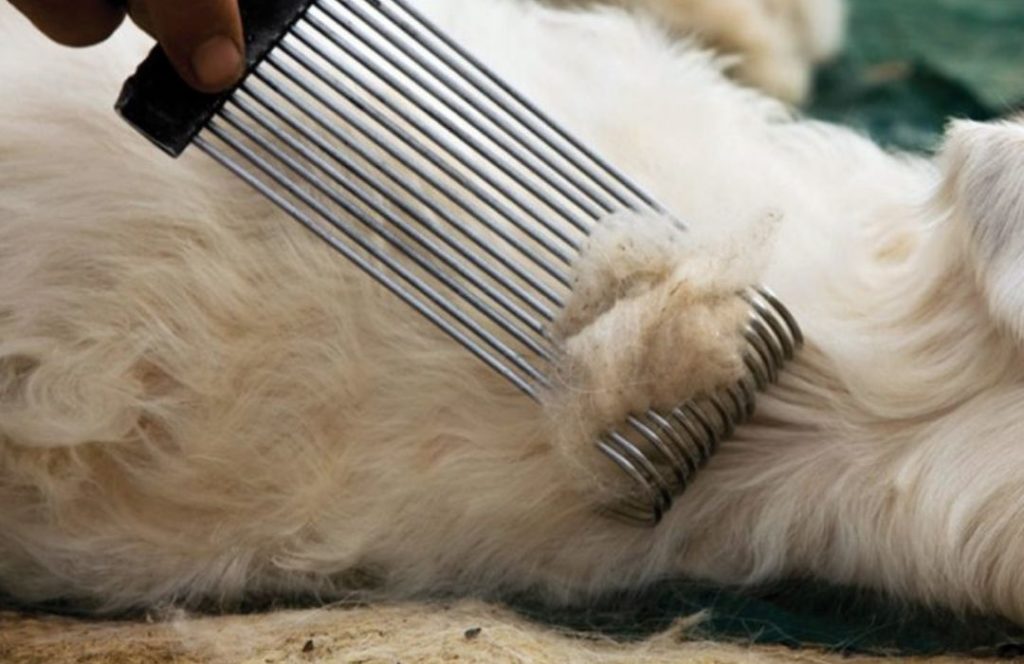
The whole body of a Changthangi goat is covered in hair - guard hair and Cashmere. Just its face and muzzle are without hair. Their ears are small, and their body is straight and heavy. The fine Cashmere grows mostly on their underbelly, neck and behind the ears. It is from these areas that herders gently comb out the wool and send it for further processing to Kashmir. The procedure is safe for the goat, and no animal is harmed in the process of wool acquisition.
Types of Pashmina goats
Based on a number of physical features and the quality of Cashmere that they produce, Pashmina goats are classified into four main types: Western, eastern, northern and the Pashmina mohair crossbreed.
- The Western Type Pashmina Goat: The main feature that differentiates this goat type from others is its high production of Cashmere and the coarser feel it gives. Their undercoat is longer than the other counterparts. The undercoat fibre diameter is believed to be 18 to 20 micros, which can be considered as an average quality Cashmere.
- The Eastern Type Pashmina goat: The feature that separates Eastern Pashmina goats from the others is a long outer coat which protects short undercoat fibre. The production of Cashmere in these goats is around 350 grams (for females). The best and healthiest of these animals produce even more than this. These are primarily found in Mongolia
- Feral and Northern goats: Feral goats which are re-domesticated are relatively new when it comes to Cashmere production. They produce less undercoats and for this reason, they are usually neglected.
- Crossbred goats (Mohair and Pashmina): If Mohair and Pashmina goats are crossbred, it leads to an increase in fibre length, strength, weight and diameter.
Life with the Pashmina goat
The tough and active Changthangi goats are very well adapted to their living conditions and migratory life. Survival is at times hard in the Changthang region, but the goats know how to. Their herders are a Buddhist nomadic tribe called Changpa. Changpa lives in large circular tents with a heating system installed at the centre of them. Changpa takes their animals out during the day to graze and return back to their shelter at night. Although these herds are migratory, the nomads have already marked grazing areas for summers and winters separately.
Harsh climatic conditions in Changthang induce the production of Cashmere on the goats. This is nature’s gift for insulation. Nature has also bestowed the animal an adaptation to the meagre vegetation of its habitat. The Changthangi goats hence prefer to survive on a sparse diet and shrubs to rich grass.
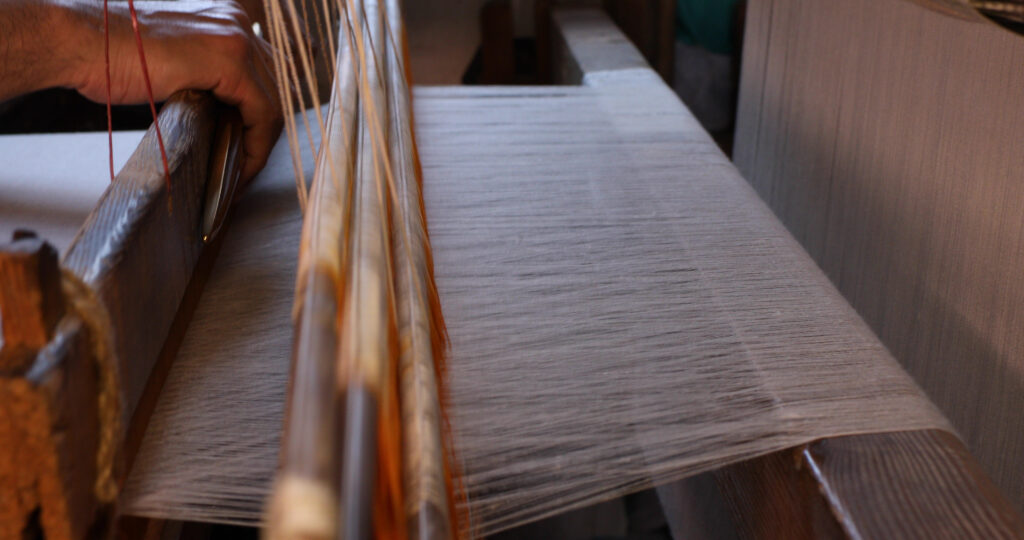
Moulting season starts by the end of winter, in March. It is during this time that the goat starts losing hair, and by summer, has lost a large portion. Herders gently comb the left out portion with the use of specialised combs and tools. This hair is packed in small packets and sent to Kashmir for processing. The processing of fine Cashmere means cleaning it, spinning it and weaving it manually to produce luxury Pashmians shawls, scarves and wraps. Cashmere is also used to make furnishing items, blankets, apparel, socks, pocket squares and other accessories.
Also read: Do vegans wear Cashmere Scarf?
Breeding in Pashmina goats
Breeding in Pashmina goats takes place in the month of November and December. The birth of a new one takes place in around April or May. The kid mortality is, however, low. The weaning of a newborn goat is done at 4 months of age.
The reproductive traits of the goats are significant for a herder. To maintain the population of his herd, he needs to keep a check on the reproductive age, gestation period, time of birth, intervals between two births and even the litter size of the goat. The birth of a single goat is common among Changthangi goats, and twinning is rare. The gestation period for Cashmere goats of Ladakh is 150 days.
Production of Pashmina around the world
As far as the total production of Cashmere is considered around the world, it is China and Mongolia that top the list. While China produces 70% of the total Cashmere production, Mongolia ranks second and produces 20%. India constitutes just 1% of the world Cashmere production.
Cashmere yield by male goats (bucks) is lower than that produced by does. Pashmina yield in one goat, on average, is just 80 grams when combed at first. Then it gives 150 grams at the second clip and 250 at the third. This number gradually decreases with more clips. The length of the fibre is more in male production than that in females.
Properties of the Pashmina fibre
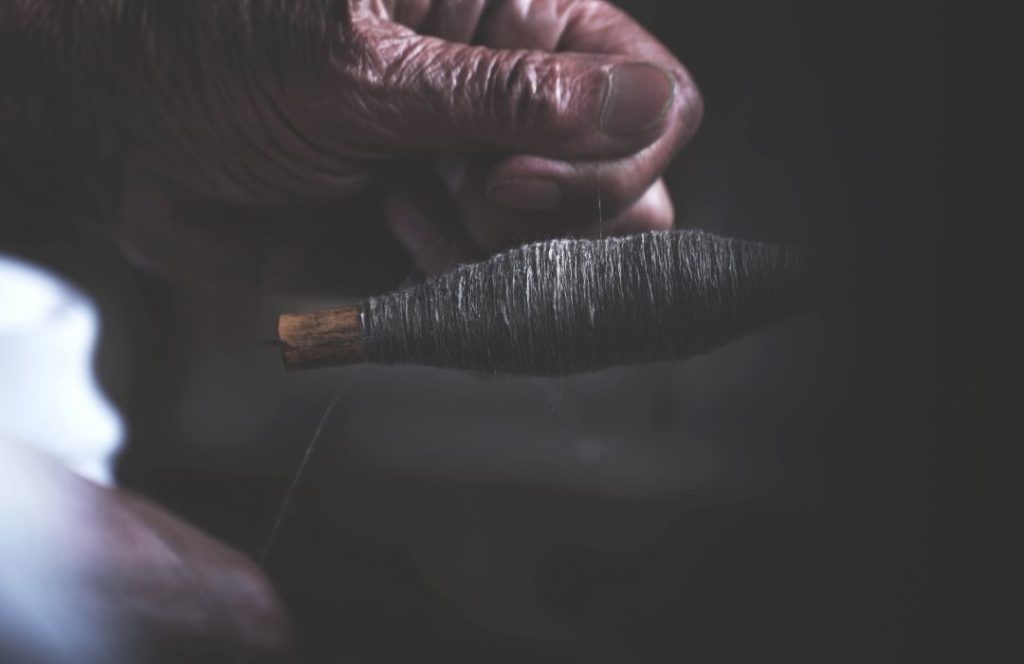
Pashmina shawls are world-famous for their quality of being fine and lightweight. This finesse is owing to the fineness of the Cashmere fibre that grows on the body of Changthangi goats. The fineness of a fibre dictates the quality of the final product. If at all the fibre diameter exceeds a certain limit, it is not considered Pashmina at all. It is for this reason that the Changthangi goat is considered to produce the best quality Cashmere, as the wool produced on its body is the finest.
Fibre fineness differentiates Cashmere fibre from the wool fibre. The average fibre fineness of Cashmere fibre is 12 to 16 microns. The average length is 55 to 60 mm. Cashmere fibre is protected by guard hair which is thicker than what it stores.
The weather conditions of Changthang are essential for Cashmere to be of a particular thickness. If Changthangi goats are moved just a few kilometres down the plateau, they will not be able to produce fine Cashmere. The thickness of wool increases as one moves the goat from its original habitat.
Also read: Which country has the best Cashmere?
Diseases prevalent in Pashmina goats
It is a rare phenomenon to see Changthangi goats getting a disease. Most of the animals suffer from a retarded or stunted growth. It is just problems related to indigestion that attacks these goats. This can be accredited to the intake of parasitic grasses, which leads to the growth of ringworms or tapeworms. For these reasons, at times the goats receive vaccinations. At some properly organised farms, herders give their animals antiparasitic drugs two times a year to avoid the growth of ticks. But, since all farms are not organised, and usually these animals keep roaming around the Himalayas with their herders, it is not possible to go for vaccines and medicines. For this reason, mortality has increased in the goats.
Concluding
The fine and luxuriously soft wool bids farewell to Ladakh, and enters Kashmir to get processed by the golden specialist hands of the artisans. Wool gets converted to opulent shawls in the valley and is exported to nations all over the world.
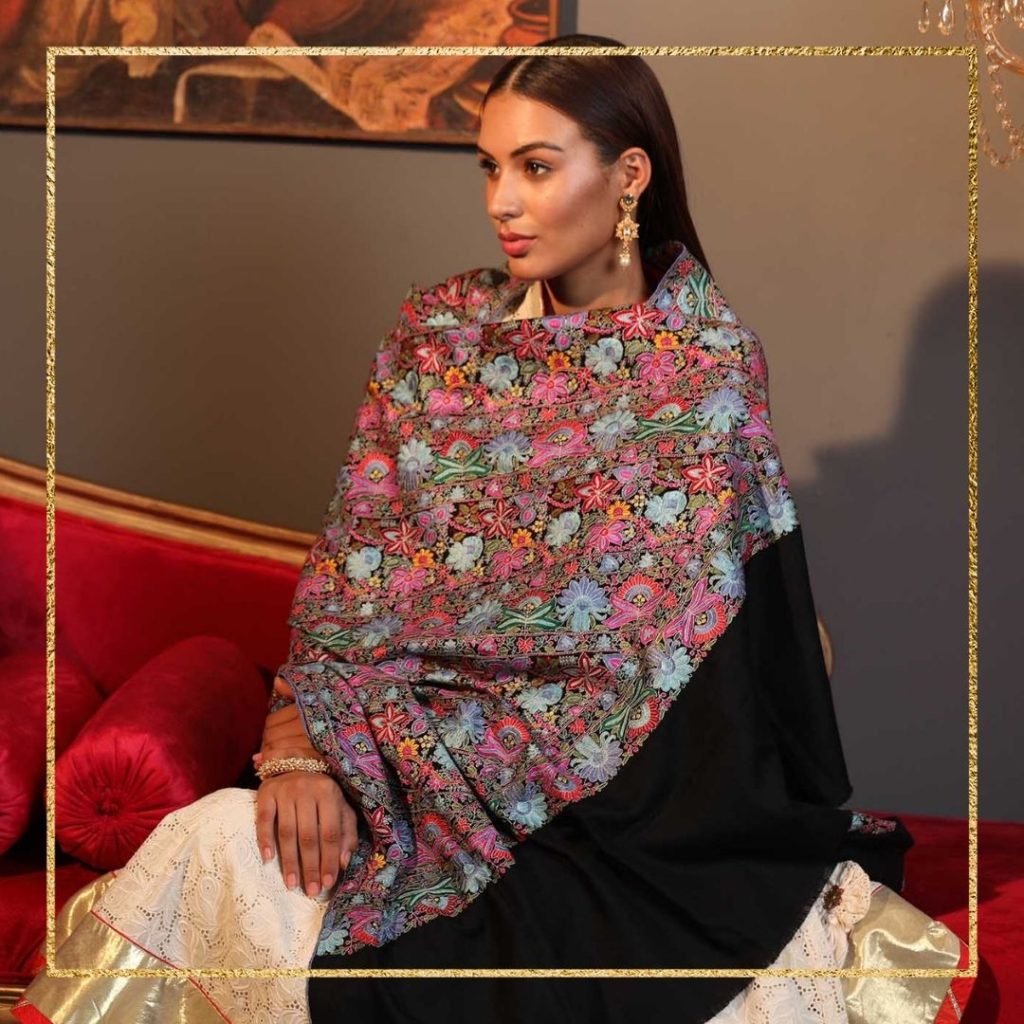
One can owe the existence of Pashmina shawl, and the mere possibility of having them, to the Changpa tribe and their goats. It is just because the Changpa rear goats with painstaking efforts that we have the Kashmiri Pashmina shawl. On the other hand, in the cruel winters, the goats survive only because of the wool growing on their bodies.
To the Changpa tribe and the goats that they rear, we can credit the fame and acclaim that Kashmir got in the 18th century. The local Mughal royals were absolutely swooned by its beauty and hence introduced it to the entire world. Also, it was Europe and many of its nations that were captivated by the elegance and beauty of Kashmiri shawls. Little did they know that it was the Changpa tribe that worked their blood and sweat to take care of these animals. And that, how strong and sturdy the animals are to survive one of the world’s most harsh conditions.